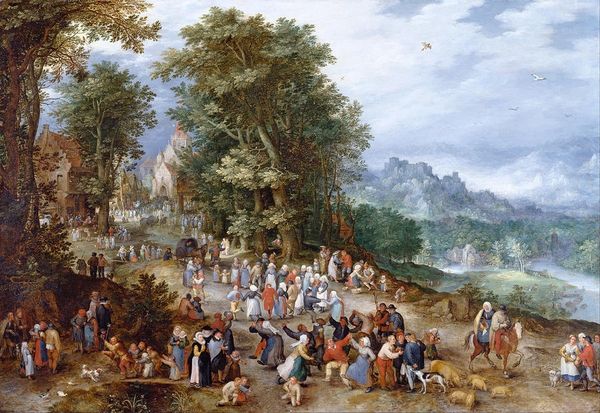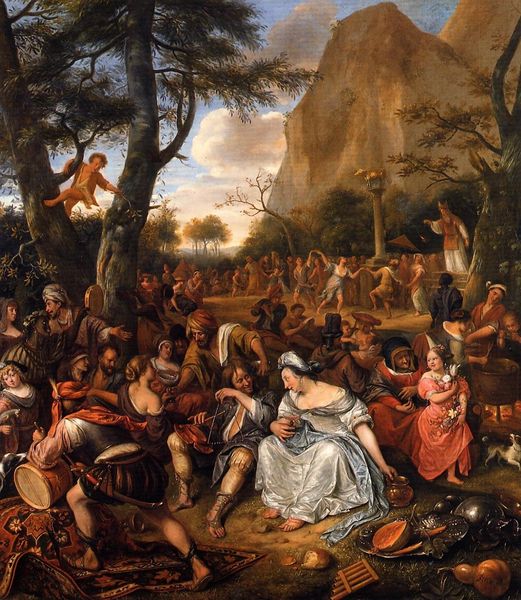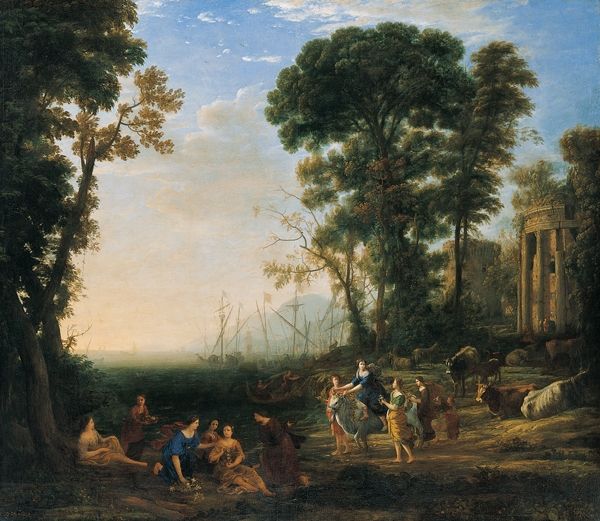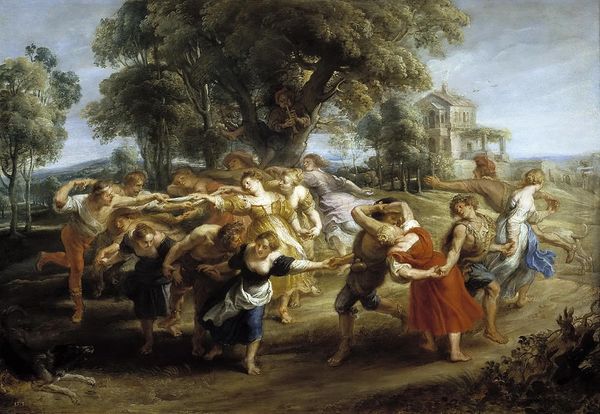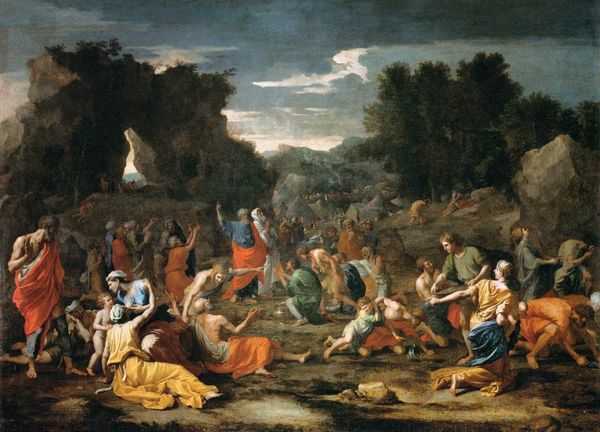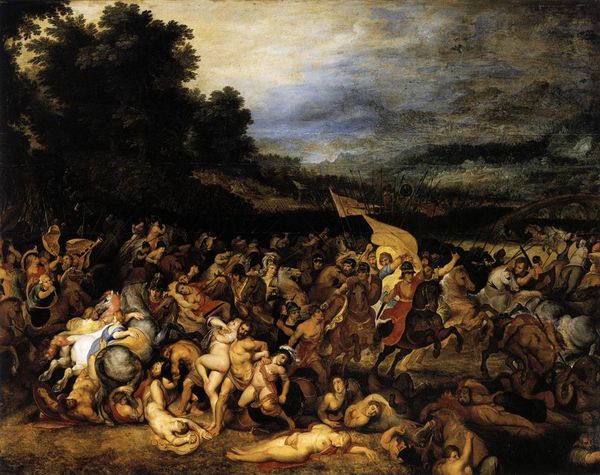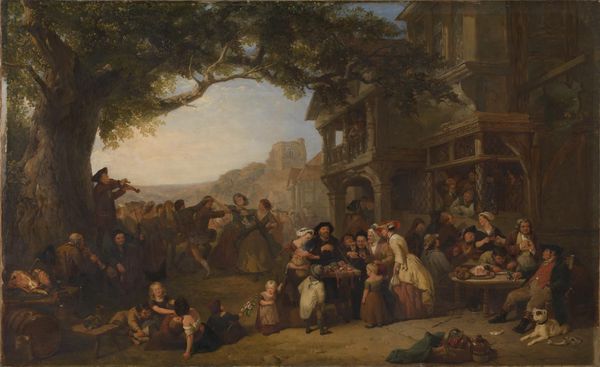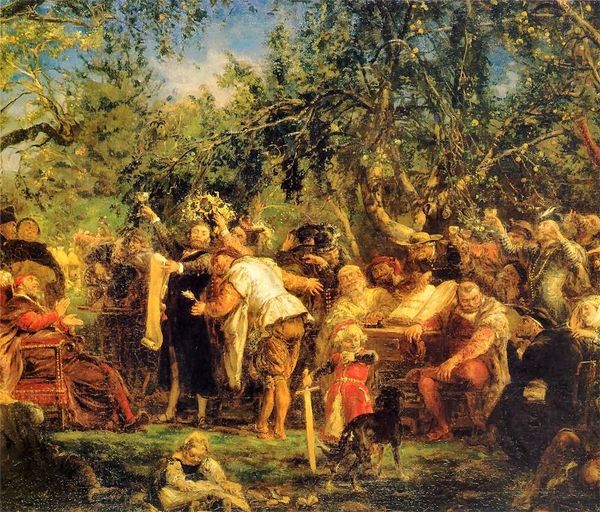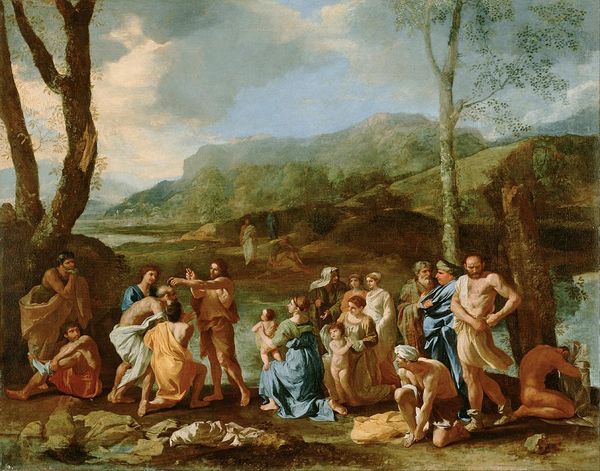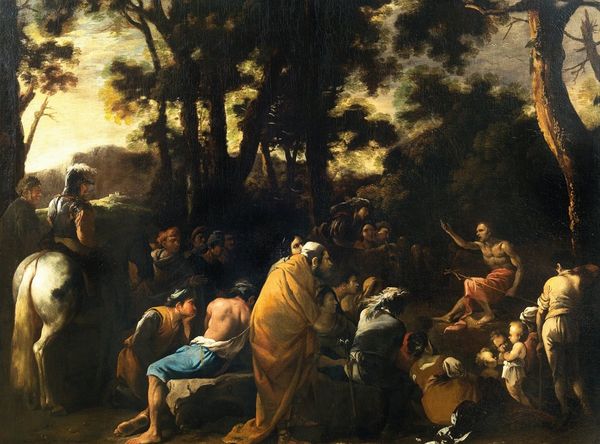
oil-paint
#
baroque
#
oil-paint
#
landscape
#
figuration
#
oil painting
#
genre-painting
Dimensions: 149 x 261 cm
Copyright: Public domain
Editor: Here we have Peter Paul Rubens' "The Kermesse," painted in 1638, rendered in oil on wood. The canvas is teeming with life, almost overwhelming the viewer with the sheer energy of this outdoor festival. What do you see in this piece, looking beyond the subject matter? Curator: Immediately striking is the masterful use of dynamic composition. The figures aren't simply placed; they’re interwoven, creating a sense of swirling motion. Notice how Rubens employs diagonals throughout—the leaning figures, the flow of the landscape—to energize the entire plane. It’s a masterful exercise in controlled chaos. How does the light contribute to this sense of movement, would you say? Editor: The light definitely draws attention to different pockets of activity, spotlighting some figures while others are cast in shadow, giving everything a very animated feel. Curator: Precisely. Note too how Rubens organizes space through colour. Warm earthy tones dominate the foreground, while cooler blues and greens recede into the distance. It’s a Baroque technique designed to draw the eye deep into the picture plane. The figures are rendered with a tactile quality that seems to jump forward from the background. What about the surface texture, what did you observe? Editor: I notice the brushwork, thick and luscious, giving depth and volume to the figures and making them feel almost palpable. Is there significance in Rubens' choice of impasto here? Curator: Indeed. The pronounced brushstrokes, the palpable materiality of the oil paint, underscore the physicality of the scene. The paint application calls attention to the artificiality of painting. In this painting, form and matter unite into something revelatory and raw. Editor: So by using colour, light, and texture in the way that he does, Rubens is essentially celebrating painting itself? Curator: Precisely. "The Kermesse" exemplifies how close examination can reveal the mechanics that elevate it into a masterful composition. Editor: That’s fascinating. Looking at it from this angle really opens up a whole new level of appreciation.
Comments
No comments
Be the first to comment and join the conversation on the ultimate creative platform.
